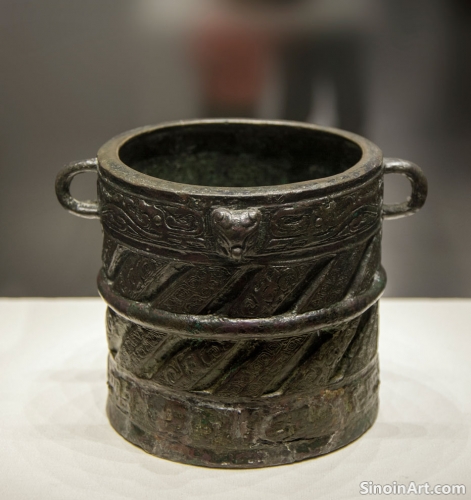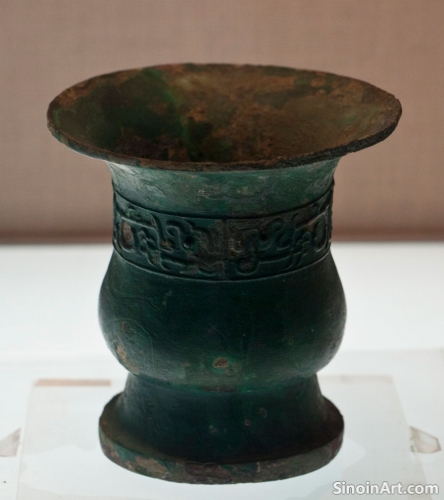Bronze Ware and the Development of Ancient Chinese Technology: Innovation and Practical Applications
|
Beyond its aesthetic value, bronze played a crucial role in the development of ancient Chinese technology, used in various implements, devices, and systems that enhanced daily life, agricultural practices, and military capabilities. The study of bronze artifacts helps to illuminate the ingenuity of ancient Chinese artisans and their technological prowess. The practical use of bronze highlights the technological and scientific achievements of the ancient world.  Bronze was used to create a variety of agricultural tools, such as plows, hoes, and sickles, which were more durable and effective than tools made from other materials, helping to increase agricultural productivity and efficiency. The use of these tools helped to enhance the economic output of the agricultural regions. These developments helped to support the population growth and overall prosperity of the region.  Bronze was also used in the development of irrigation systems, with the use of bronze pipes, valves, and other hydraulic components helping to manage water resources for agriculture, and also for the daily life needs of cities and large population centers. The use of bronze made the water management systems more efficient and more reliable.  Bronze was essential in the creation of more effective weaponry and also for the creation of better and more sophisticated tools. Bronze was a versatile material that helped to promote innovation and to facilitate advancements in a variety of fields. The technological innovations of this era helped to create a powerful and wealthy society. The study of bronze and its connection to technological development reveals the ingenuity and innovation of ancient China, demonstrating the intertwining of artistic expression, technical skill, and practical needs. The objects created during this era reveal a deep understanding of materials science and also show the importance of combining form with function. |
Tag : bronze technology, Chinese innovation, ancient tools, agricultural implements, hydraulic engineering
Related information
- Bronze Mirrors and Ancient Chinese Beliefs About the Soul: Reflection and Transformation
- The Use of Bronze in Ancient Chinese Water Clocks and Timekeeping Devices
- The Use of Bronze in Ancient Chinese Water Control: Dams, Canals, and Irrigation Systems
- The Influence of Tang Dynasty Culture on the Design and Decoration of Bronze Ware
- Bronze Ware and the Development of Ancient Chinese Cartography: Maps and Measurement
This article explores the connection between bronze mirrors and ancient Chinese beliefs about the soul, highlighting their role as guides in the afterlife, their association with spiritual transformation, and the belief that they could capture and preserve the soul's essence.
This article explores the use of bronze in ancient Chinese water clocks and other timekeeping devices, highlighting their complex mechanisms, their integration of astronomical data, and their importance in standardizing time measurement for a variety of purposes.
This article explores the use of bronze in ancient Chinese water control systems, highlighting its role in creating durable components for dams, canals, and irrigation networks, and demonstrating its importance for agricultural development and water management.
This article explores the influence of Tang Dynasty culture on bronze ware, highlighting new forms, decorative techniques, and their shift toward more refined and elegant designs that reflect the style of the period, and its focus on elegance and beauty.
This article explores the use of bronze in ancient Chinese cartography, highlighting its role in creating surveying tools, measuring instruments, and other devices used in mapmaking, and demonstrating its importance in facilitating the creation of accurate geographical records.